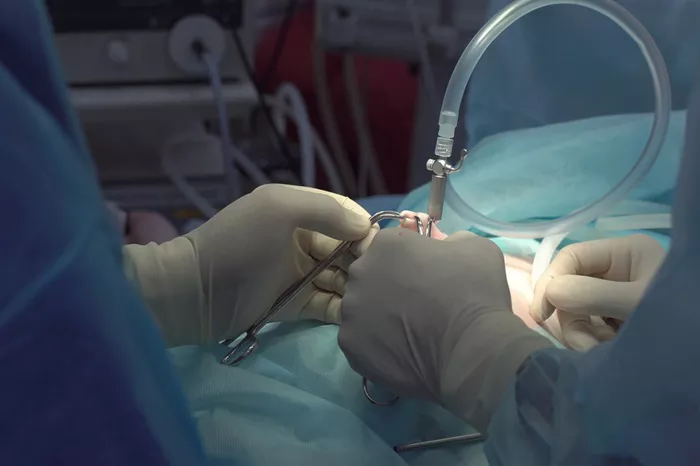BIA (Bioabsorbable Intraperitoneal Anastomosis) hernia repair is a surgical procedure used to treat abdominal hernias. This innovative approach involves the use of bioabsorbable materials to reinforce the abdominal wall and facilitate tissue healing. One common concern among patients undergoing BIA hernia repair is the appearance of the scar post-surgery. In this comprehensive guide, we’ll explore how BIA hernia repair scars are formed, their characteristics, and tips for scar management and reduction.
What is BIA Hernia Repair?
Before delving into the specifics of the scar, let’s first understand what BIA hernia repair entails. BIA hernia repair is a surgical technique used to address abdominal hernias, which occur when an organ or tissue protrudes through a weak spot in the abdominal wall. This procedure involves reinforcing the weakened area with a bioabsorbable mesh material, which gradually dissolves over time as the body heals.
The Formation of BIA Hernia Repair Scars
During the BIA hernia repair procedure, small incisions are made in the abdominal wall to access the hernia site. These incisions serve as entry points for the surgical instruments and allow the surgeon to place the bioabsorbable mesh material. As with any surgical procedure, the healing process following BIA hernia repair involves the formation of scar tissue.
The formation of scar tissue is a natural part of the body’s healing response. After surgery, the body initiates a series of complex biological processes to repair the damaged tissue and restore normal function. As the incisions heal, collagen fibers are deposited in the wound site, eventually forming a scar. The appearance of the scar can vary depending on factors such as the individual’s skin type, the size and location of the incision, and the quality of wound care during the recovery period.
Characteristics of BIA Hernia Repair Scars
BIA hernia repair scars typically have several distinctive characteristics:
Size and Location: The size and location of the scar will depend on the number and placement of incisions made during the surgery. In BIA hernia repair, the incisions are usually small and strategically placed to minimize scarring and optimize healing.
Texture: BIA hernia repair scars may initially appear raised, red, and slightly raised. Over time, the scar tissue may flatten and become less noticeable as the healing process progresses.
Color: Initially, BIA hernia repair scars may appear red or pink in color due to increased blood flow to the healing tissue. Over time, the color of the scar may fade to a lighter shade, eventually blending in with the surrounding skin.
Tenderness and Sensitivity: In the early stages of healing, BIA hernia repair scars may be tender to the touch and sensitive to pressure or movement. As the scar tissue matures, these sensations typically diminish.
Long-Term Appearance: With proper care and scar management techniques, BIA hernia repair scars can fade significantly over time, becoming less noticeable and more closely resembling the surrounding skin.
Tips for Scar Management and Reduction
While BIA hernia repair scars are a natural part of the healing process, there are several steps that patients can take to minimize their appearance and promote optimal healing:
Follow Post-Surgery Care Instructions: It’s important to follow your surgeon’s post-surgery care instructions carefully to promote proper healing and minimize the risk of complications.
Keep the Incision Site Clean and Moisturized: Clean the incision site gently with mild soap and water, and apply a moisturizing ointment or cream to keep the skin hydrated and promote healing.
Protect the Scar from Sun Exposure: Sun exposure can cause scars to darken and become more noticeable. Protect the scar from the sun by covering it with clothing or applying sunscreen with a high SPF.
Massage the Scar Tissue: Gentle massage of the scar tissue can help break up scar tissue and improve blood flow to the area, promoting healing and reducing scar visibility.
Consider Scar Reduction Treatments: In some cases, scar reduction treatments such as laser therapy or silicone gel sheets may be recommended to minimize the appearance of BIA hernia repair scars.
Be Patient and Persistent: Scar healing is a gradual process that takes time. Be patient and consistent with scar management techniques, and remember that scars will continue to improve over time.
Conclusion
BIA hernia repair scars are a natural part of the healing process following surgery. While the appearance of scars may initially be concerning for some patients, with proper care and scar management techniques, BIA hernia repair scars can fade significantly over time. By following post-surgery care instructions, protecting the scar from sun exposure, and considering scar reduction treatments as needed, patients can promote optimal healing and minimize the appearance of scars. Ultimately, the goal of BIA hernia repair is to restore function and improve quality of life, and scars are a small price to pay for the benefits of this innovative surgical technique.
[inline_related_posts title=”You Might Be Interested In” title_align=”left” style=”list” number=”6″ align=”none” ids=”8516,8408,8339″ by=”categories” orderby=”rand” order=”DESC” hide_thumb=”no” thumb_right=”no” views=”no” date=”yes” grid_columns=”2″ post_type=”” tax=””]






























